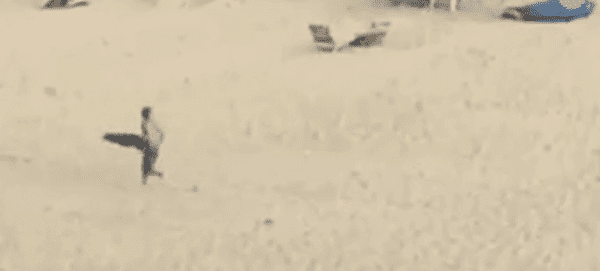
In 2016, a woman living in China was in a motorcycle accident and died. But it wasn't the motorcycle impact that killed her - it was an airborne umbrella.
Around the same time, across the world at Virginia Beach, another woman was hit by an umbrella caught in the air. She later died from cardiac arrest after the umbrella hit her in the torso. The woman's daughter said the beach was always her mother's favorite place to be.
While umbrella-related deaths might be uncommon, they aren't unheard of.
The statistics
Central European News (CEN) reported that roughly 2 million deaths per year occur globally from umbrella-related accidents, with even more victims surviving non-fatal injuries.
Inside Edition recently reported on two other umbrella victims, both on the same beach and on the same day. Ed Quigley (who always spends his summers at the beaches of Delaware), lost his eye when a gust of wind picked up a beach umbrella and Lynn Stevens, who whose leg was sliced by an errant umbrella. Both victims survived, but left the beach that day warning others how dangerous umbrellas can be.
The danger
While some umbrella injuries are caused by the compact versions in your purse and larger umbrellas in your car and home, the most dangerous type of umbrellas are found at the beach. Their size and screw-like bases (meant to keep the umbrella upright in the sand) soon become deadly weapons on a windy day.
But we don't expect you to just stop using umbrellas. I mean, come on. Everyone has one. You can help keep yourself and others safe by following these tips.
Tips to keep you safe
Fortunately, there are options for people who want an umbrella to provide some shade when they go to the beach. Find beach umbrellas that have air vents, so they can't be as easily picked up by the wind. Some also come with sand anchors, which secure the umbrellas more securely in the sand. To help protect yourself and others, take your umbrella down and find shade elsewhere on a windy day at the beach.
Handheld umbrellas can also be dangerous. On windy and rainy days, the safest bet is to simply wear a coat with a hood. Not only is it easier to maneuver than an umbrella caught in the wind, it poses less of a threat for those around you.
If you do use an umbrella, be sure to tuck it away when not in use to avoid any unintentional bumping. Your fellow peers will thank you for it!

